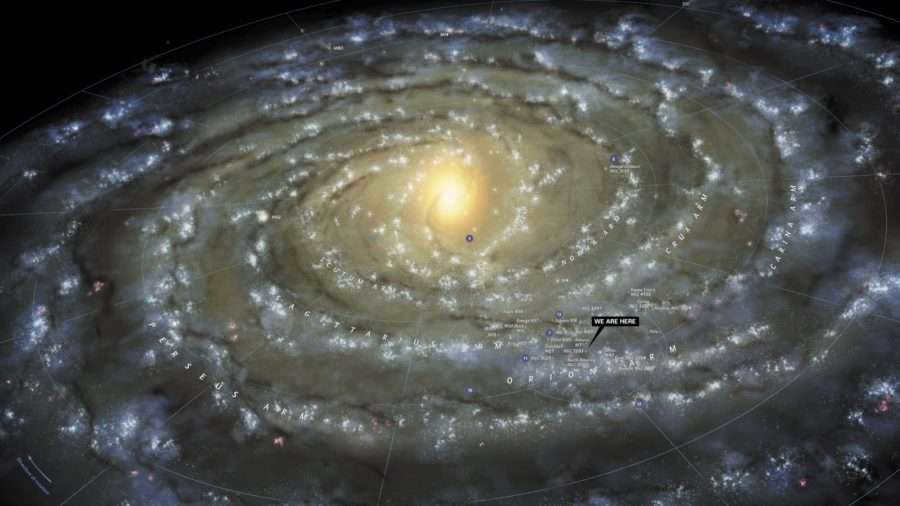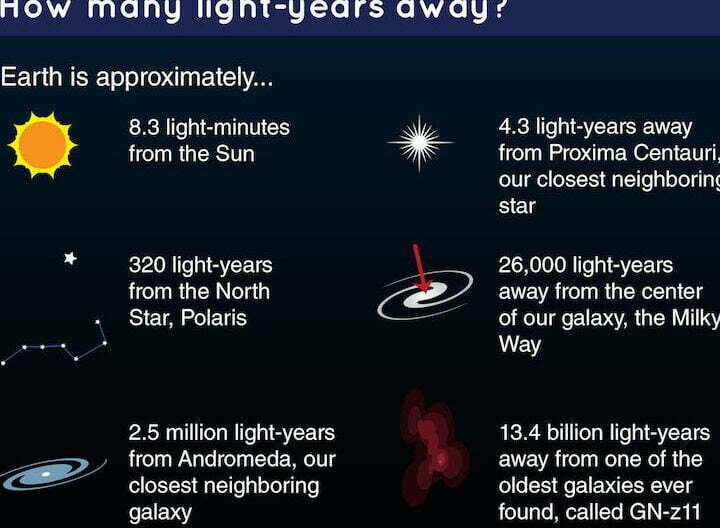
The speed of light is a measurement value that stands out from all others. Albert Einstein was the first person to attempt an explanation of how light travels.
It was Einstein who derived the famous equation:
E = mc²
Here, E represents the total energy of an object,
m represents mass,
and c represents the speed of light in a vacuum.
What is the velocity of light?
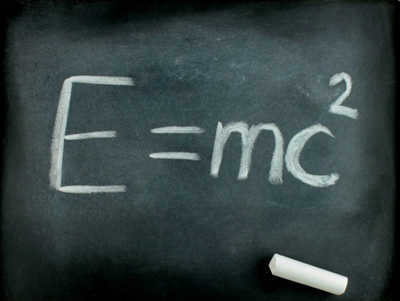
The speed of light formula was initially published in the scientific journal Annalen der Physik back in 1905. During the same period, Einstein proposed a theory regarding the behavior of objects moving at the maximum possible speed. By assuming that the speed of light remains constant, he deduced that space and time would undergo changes.
Consequently, when traveling at the speed of light, an object would become infinitely compressed, its mass would infinitely increase, and time would essentially cease.
The speed of light is approximately 300,000 km/s or 299,792,458 ± 1.2 meters per second, and a light year is equivalent to 3.26 light years.
It is not possible to achieve the speed of light, let alone surpass it. At least in the current stage of human development.
However, approaching the speed of light is the only hypothetical means of interstellar travel, as the distances in space are so vast that a human lifetime is insufficient to travel from one solar system to another. This implies that attaining the speed of light would enable time and space travel, presenting immense and wide-ranging opportunities for humanity.
Are there methods to reach the speed of light
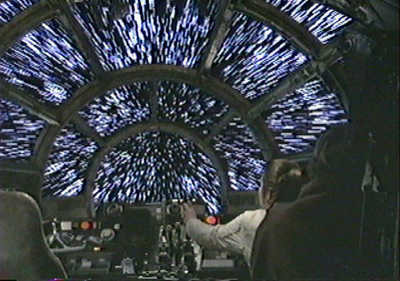
The speed of light remains constant, with a value of approximately 300,000 kilometers per second. The most precise measurement of the speed of light, established in 1933, sets it at a maximum of 299,792 kilometers per second. In a vacuum, this speed remains constant regardless of different conditions, unlike on Earth. It is widely believed that the speed of light is the fastest possible speed, surpassing any other known motion. In comparison, the speed of sound is much slower than light, which is why we see lightning before hearing the accompanying thunder, even though they occur simultaneously.
It can be argued that the breakthrough of surpassing the speed of light by man would mark the advent of a novel epoch in the advancement of human civilization. However, the current state of affairs suggests that we are not as near to achieving this feat as we desire, and mankind is currently incapable of attaining such velocities. Moreover, it is worth contemplating whether it is even desirable for a human being, given the potential consequences that occur when the speed of light is attained by a physical entity.
What occurs when the velocity of light is attained
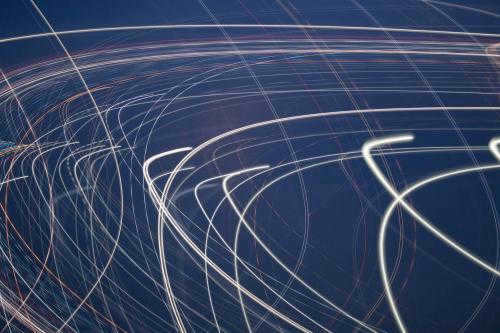
Let’s imagine a scenario where humanity, utilizing advanced technology, has successfully constructed a universal spacecraft capable of eventually traveling at the speed of light. This spacecraft is designed to carry passengers. As we know, the faster an object moves, the slower time appears to pass for it. In other words, when traveling at the speed of light, time can seemingly come to a halt, and individuals on board the spacecraft may effectively travel into the future. The theory surrounding the speed of light encompasses a multitude of speculative possibilities and potential achievements. However, it is important to acknowledge the challenges and complications that exist within this field.
Why it is impossible to surpass the speed of light

The phenomenon of light is characterized by its composition of weightless photon particles. This essential quality ensures that light does not possess destructive properties. Additionally, it is impossible for humans to avoid exposure to radiation. The vast majority of space is occupied by hydrogen atoms, comprising approximately 90% of its composition. Currently, these atoms have minimal impact on spacecraft, barely detectable in their collisions. However, as the spacecraft approaches the speed of light, these atoms will become highly detrimental, causing severe damage to both the vessel and its occupants. In fact, an astronaut would not be able to survive for more than a couple of seconds under such circumstances, and there is currently no known defense mechanism against this phenomenon. One potential solution could involve the development of aluminum armor, but its thickness would need to be several meters, rendering it impractical. As of now, it remains impossible to implement such a solution in real-world conditions, leaving only scientific theories as potential avenues for further exploration.
Movement at the speed of light remains a fantastical notion, with humanity still harboring dreams of exploring remote galaxies, parallel dimensions, and traveling to the future or past by harnessing the power of light. Countless stories and films have been dedicated to this concept, as mankind steadily inches closer to achieving this ultimate goal. At the dawn of the 20th century, the idea of space travel, propelling subatomic particles like protons to light speed, and creating supersonic aircraft would have seemed unimaginable. Who knows, perhaps in just 50 years, intergalactic flights will be as commonplace as traveling between cities.
Have you ever pondered the possibility of traveling at the speed of light? Maybe, with the right technology to aid us in achieving that velocity, we could one day soar to the far reaches of the universe and behold what lies beyond?
A touch of theory
The velocity of light in a vacuum remains a constant value that we know with great precision: hence, light travels at 299,792,458 meters per second. This serves as the speed of propagation for all electromagnetic fields in a vacuum, encompassing radio waves, infrared, ultraviolet, X-rays, and gamma rays.
According to Einstein’s Special Theory of Relativity, nothing can surpass the speed of light. In everyday circumstances, light appears to move instantaneously to us. For instance, we don’t have the opportunity to perceive photons being reflected off objects and absorbed by surfaces in a room when the lights are switched off – it occurs too quickly.
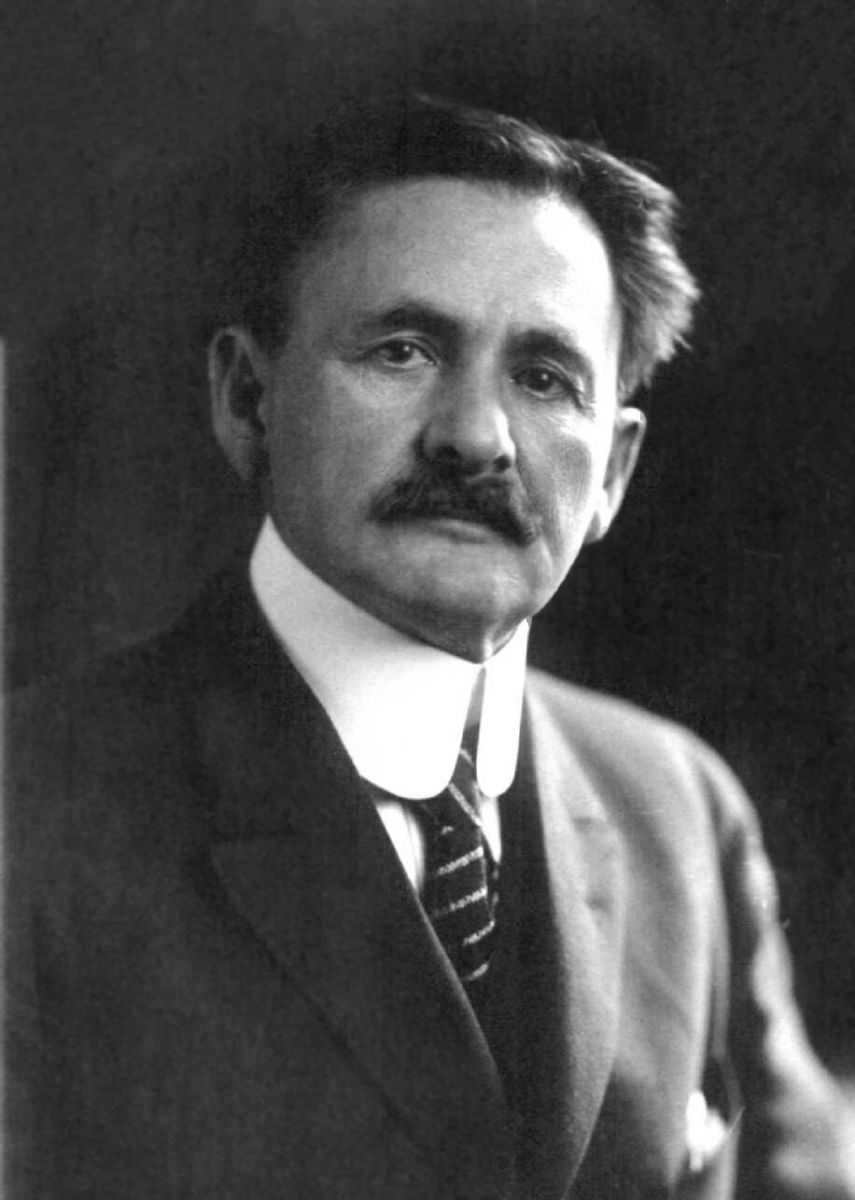
Humans and their love for speed
It is undeniable that humans have a strong affinity for speed. Since the invention of the wheel, our desire to move faster has been insatiable. The ability to surpass the limitations of our own physical strength has fueled our fascination with speed. The faster we go, the more exhilarated we feel (although it is important to acknowledge that high speeds can be daunting for some individuals). Throughout history, mankind has made remarkable advancements in achieving incredible speed, such as supersonic airplanes, ultra-fast fighter jets, and high-speed trains. However, the Universe holds a secret that surpasses anything we have accomplished thus far – the speed of light.
So, it is not uncommon for one to ponder, while enjoying a bottle of beer or a mug of tea after a long day, what it would be like to travel at the speed of light.
What would occur if we were traveling at the speed of light?
If a person were to travel at the speed of light, they would experience time dilation, meaning that time would pass more slowly for them compared to someone who is stationary. Additionally, their perception of the universe would undergo a drastic transformation. When traveling at the speed of light, the universe would appear as a tunnel in front of the individual, as though they were moving through it on a machine. This concept is truly intriguing.
Up until the 20th century, it was widely believed that Isaac Newton’s theories regarding objects and gravity were accurate. However, in the early 1900s, Albert Einstein came along and forever changed our understanding of the world.

Einstein’s theory of relativity provided a clear explanation for various concepts relating to mass and energy. The equation of mass-energy equivalence demonstrated that mass and energy can be converted into one another, and vice versa. Additionally, he proposed that there is no single fixed reference frame, as everything is relative, including time. This realization led him to conclude that the speed of light is constant and does not depend on the observer. Therefore, if an individual is traveling at 50% of the speed of light in the same direction as the light, they will perceive the beam of light in the same way as someone who is stationary.
Regarding the concept of mass and energy equivalence, the basic idea is that if an object is traveling at 10% of the speed of light, its mass will increase by 0.5% of its original mass. Similarly, if an object is moving at 90% of the speed of light, its mass will double.
Is it possible to travel at the speed of light?
No, it is not possible for us to travel at the speed of light. The main reason is that as an object approaches the speed of light, its mass increases exponentially. Just imagine: the speed of light is nearly 300 thousand kilometers per second, and when an object reaches this speed, its mass becomes infinite. Consequently, moving such an object would require an infinite amount of energy (remember the mass-energy equivalence), which is clearly impractical.
In simple terms, this is why no object, except for light itself, can travel at or faster than the speed of light.
When it comes to traveling at nearly the speed of light, around 90% of it, we can expect an intriguing phenomenon.
Traveling (almost) at the speed of light
To begin with, an individual moving at such a velocity will encounter time dilation. Time will progress at a slower pace for them compared to someone at rest. For instance, if a person is traveling at 90% of the speed of light, while 10 minutes elapse for them, 20 minutes will pass for a stationary person.
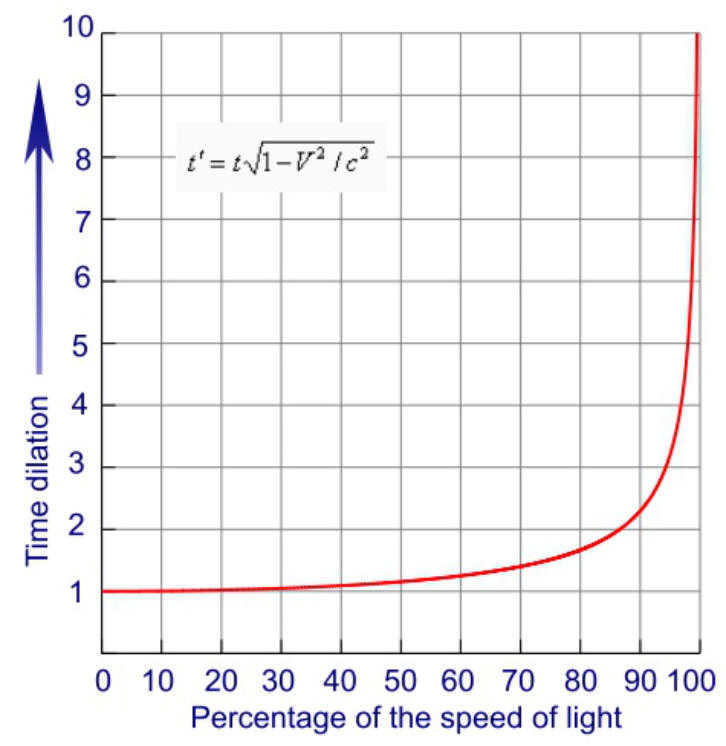
Significant modifications in the realm of sight should also be acknowledged. When an individual is in motion – in any direction – at a velocity of 90% the speed of light, as mentioned earlier, the cosmos will appear as if observed through a porthole situated in front of their spacecraft. The stars that they are approaching will exhibit a blue hue, while those that they are leaving behind will appear red. This phenomenon occurs because the light waves emitted by the stars in front of them will congregate, resulting in a blue appearance, whereas the light waves from the stars left behind will elongate and transform into red, causing an intense Doppler effect.
Once a certain threshold is crossed, an individual would be immersed in darkness since the wavelengths reaching their eyes would lie outside the range of the visible spectrum.
Undoubtedly, despite taking into account all the challenges and hindrances associated with journeying at (or close to) the velocity of light, it would undeniably be an extraordinary expedition.
Regarding the subject
Albert Einstein and his unparalleled heritage
The ultra-precise atomic clock was employed to verify the special theory of relativity
Is the speed of light slower than originally believed?
Trending
Scientists discover ancestors of the famous ‘ice man’ Etzi
A recent investigation has revealed that the individual whose remains were preserved in the alpine ice for thousands of years had a bald head and dark skin.
Experts uncover a possible method of transmitting sound in outer space
Researchers from Finland have successfully demonstrated the practicality of the phenomenon known as “vacuum phonon tunneling”. In specific circumstances, sound vibrations can traverse a vacuum gap and transfer from one object to another.
Discovery of Two Cultures in a Settlement at the Bottom of Lake Van
Explorers of underwater archaeology have made an extraordinary find – the remains of a sunken civilization and a burial ground that bear the markings of two distinct cultures. This remarkable discovery sheds new light on the ancient societies that once thrived near Lake Van.
Unveiling the “Ice Mouse” from the Dinosaur Era
A fascinating creature from the time of dinosaurs has been unveiled by scientists. This minuscule organism, which inhabited northern Alaska approximately 73 million years ago, possessed the remarkable ability to survive in freezing temperatures without undergoing hibernation. Resembling a shrew in appearance, this extraordinary animal weighed less than an empty aluminum soda can.
An international group of researchers has discovered proof that Vlad Tepes, also known as Count Dracula, had a rare ailment that resulted in his tears being mixed with blood.
Trading of cities by Bronze Age rulers
Turkish archaeologists have uncovered a one-of-a-kind tablet with an inscription in Akkadian, which detailed an extraordinary economic circumstance nearly four thousand years ago.
India has initiated the shipment of weapons to an undisclosed buyer. After careful analysis, it has been revealed that the recipient is Armenia.
This marks a significant milestone as it is the first time that India has exported a large quantity of military armaments. Previously, there had been limited demand for advanced Indian military hardware in foreign markets.
A recent scientific study has debunked the popular “ten thousand step rule”.
It has long been believed that walking at least ten thousand steps per day is crucial for maintaining good health. However, a comprehensive study has now shown that the benefits of walking are not solely dependent on reaching this target, and that even four thousand steps per day can significantly decrease the risk of mortality.
Paleontologists have identified potentially the largest creature in history
Enormous fossils discovered in South America are attributed to an ancient marine mammal, which could weigh up to 340 tons – surpassing the current “record holder,” the blue whale, by one and a half times.
Opinions
It is conceivable to achieve the resultant velocity = the speed of light, relative to a certain object, and then experiment with various hypotheses.
Indeed, they are a group of visionaries, dreamers, I must say. I will contribute my thoughts: just imagine the impact of colliding with a rock at such an incredible speed, even if it is as small as your fist. And there are numerous obstacles in the way, making maneuvering quite tiresome.

Perhaps it could be simpler to decelerate the velocity of light rather than accelerate the pace of individuals. And please don’t argue that this is unattainable. Take my concept and input it into a simulator, allowing it to compute the outcomes.

There is a potential that could not propel a person to the velocity of light, but rather enhance their mobility and reduce their mass as they accelerate.
How much I enjoy perusing the remarks here!) One eccentric individual presents themselves as intelligent and debates with another eccentric individual who presents themselves as even more intelligent) Terminology is employed, the meaning of which is not entirely clear, world theories are challenged (though only in theory, as it does not function in practice), people even devise time machines and superlight engines (blended with Jedi swords) (yet no one has ever witnessed these inventions firsthand, but that is inconsequential). Keep up the fantastic work! I have great affection for you all.
Currently, there are no obstacles in the realm of traveling not only at the speed of light but also at superluminal velocity. There are no daunting barriers in this regard (refer to my previous remark). To achieve this, spaceplanes can already be constructed, propelled by unsupported propulsors that do not require fuel, an invention of my own. Additionally, there is no necessity to explore beyond the confines of our Universe to ascertain its composition. This is already evident as there is no presence of ether, preventing any potential light from other universes, if they indeed exist, from reaching us. Consequently, we are faced with absolute darkness. Incidentally, this is the reason why the sky is black. Note: The majority of the Universe consists of both ether and matter, with ether surpassing all matter by a factor of 100,000 in terms of mass.

The presence of overloads is not determined by the speed of motion, but by acceleration. Therefore, when a physical object reaches a velocity equal to the speed of light, there must have been some acceleration. Once the object has reached a speed equal to the speed of light and the acceleration is complete, there are no more overloads. Consequently, this object will not experience any gravitational forces. However, the object can continue to move at a constant speed equal to the speed of light indefinitely.
And when will you test your invented engines? As soon as you are released from the psychiatric hospital? You arrogant inventor. Where do you plan to go? To Alpha Centauri?)))))))))))))))))))))))))))))))
Albert Einstein deceived the entire scientific community with his STO and OTO. It’s possible that there has never been a greater foolishness in the field of science than these theories. Specifically, in regards to STO – the special theory of relativity – when an object’s speed of movement increases, it is important to note that only in the direction of movement do certain changes occur: the object’s size decreases, its mass increases, time slows down, and energy expenditure for movement increases. However, none of these changes occur in the other two directions. Albert Einstein, along with many other scientists, was unaware that there is not only matter but also ether. And even if they were aware, their knowledge is far from accurate, especially when it comes to understanding its various properties. Therefore, Einstein was greatly mistaken in believing that light has a single, constant speed of approximately 300,000 km/s. The speed of light actually has a different value and is composed of both relative and transfer components, similar to any form of motion. For example, depending on which galaxy it originates from, the absolute speed of light can vary significantly. If a distant galaxy is positioned exactly in the symmetry plane of our Milky Way galaxy and in the direction of its motion, the absolute speed of light would be determined by the sum of 300,000 km/s (the relative speed of light within the galaxy’s stationary ether) and 75,000 km/s (the transport speed of light, which is the speed at which the galaxy’s ether moves). This results in an absolute speed of 375,000 km/s. However, if light is coming from a distant galaxy in the opposite direction, its speed would be determined by the difference between 300,000 km/s and 75,000 km/s, resulting in a speed of 225,000 km/s. In the first case, the wavelengths of light would be longer, leading to a redshift according to the Doppler Effect. In the second case, the wavelengths of light would be shorter, resulting in a blueshift. However, galaxies in the sky appear to be located in different positions and at different angles to the plane of the galaxy, so their absolute velocities, expressed as algebraic sums, should be multiplied by the cosine of the angle. As a result, these velocities would be less than 375,000 km/s or more than 225,000 km/s. Since the postulate of the constancy of the speed of light, which STO was based on, is invalid, the entire theory is flawed. As for GTR – the general theory of relativity – it also turns out to be false, as it is based on the assumption that gravitational and inertial masses are equal. However, gravity itself does not exist. Gravity was defined as the mutual attraction of masses without explaining the underlying phenomenon. We now know that gravity is caused by the compression of sub-elementary and elementary particles that make up matter in all its forms and states, under the influence of the Universe’s ether, which has an enormous density of 102 tons/cm3 and a colossal pressure of approximately 10^24 atmospheres in the vicinity of the Solar System. Of course, these parameters vary greatly in other regions of the Milky Way galaxy.
Traveling from Los Angeles to New York would take a little over a second at a speed of 1% the speed of light.
Light is renowned for its incredible speed, as it is the fastest entity in existence. According to the laws of the universe, nothing can exceed the speed of light. Light itself travels at a staggering rate of 186,000 miles per second (300,000 kilometers per second), allowing it to traverse the distance between the Earth and the Moon in just over a second. It can even traverse the distance from Los Angeles to New York City in the blink of an eye.
Although 1% may seem like a small fraction, when it comes to light, it still constitutes a remarkable velocity – approximately 11 million kilometers per hour! At 1% of the speed of light, the journey from Los Angeles to New York City would only take a little over a second. This is more than 10,000 times faster than the speed of a commercial airplane.
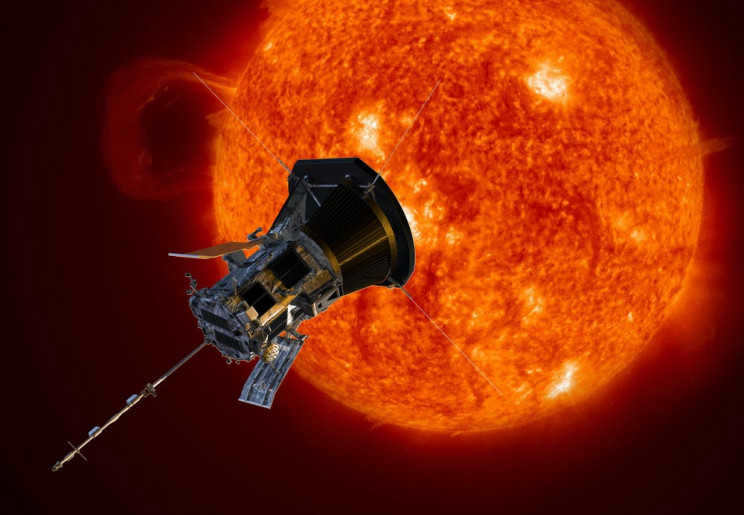
The Solar Probe developed by Parker, presented in this illustration, represents the most rapid creation ever constructed by mankind. It employs the gravitational pull of the Sun to propel itself at a velocity equivalent to 0.05% of the speed of light. The project is a collaborative effort between NASA, Johns Hopkins APL, and Steve Gribben.
The most rapid things ever invented
Bullets have the ability to reach speeds of 4,200 km/h, which is more than three times the speed of sound. NASA’s X3 jet holds the record for the fastest airplane, boasting a top speed of 11,200 km/h. While this may seem impressive, it is merely 0.001% of the speed of light.
When it comes to man-made objects, spaceships take the title for being the fastest. These spacecrafts utilize rockets to break free from the Earth’s gravitational pull, achieving speeds of 40,000 km/h. NASA’s Parker Solar Probe holds the record for the fastest spacecraft. Launched from Earth in 2018, it soared through the sun’s blistering atmosphere and harnessed the sun’s gravity to reach an astounding speed of 535,000 km/h. This incredible velocity amounts to just 0.05% of the speed of light.
Why achieving even 1% of the speed of light is challenging
The main obstacle preventing humanity from reaching 1% of the speed of light is energy. Every object in motion possesses energy, which is known as kinetic energy in the field of physics. In order to increase speed, one must increase their kinetic energy. However, the amount of energy required to achieve higher speeds is significantly greater. It takes four times more energy to double the speed of an object, nine times more energy to triple it, and so on.
For instance, if we were to try to accelerate a teenager weighing 50 pounds to 1% the speed of light, it would require an astounding 200 trillion joules of energy. To put that into perspective, this is approximately the same amount of energy consumed by 2 million people in the United States in a single day.
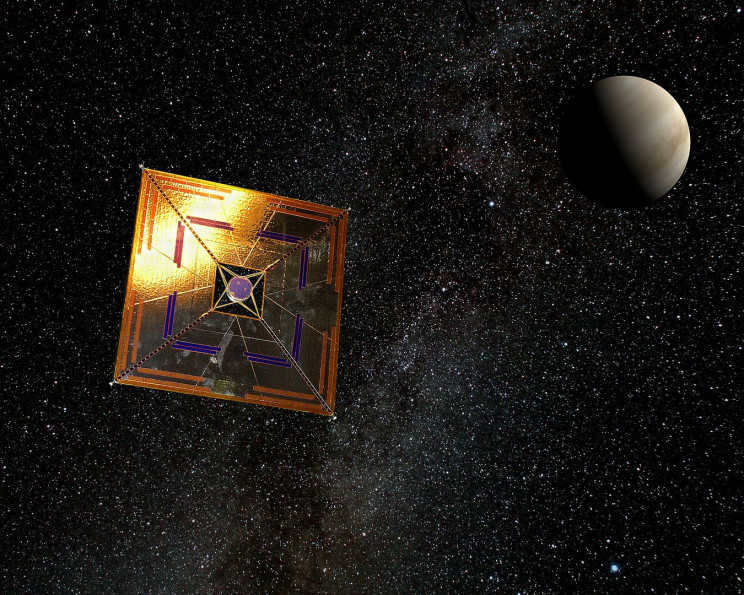
Solar sails, like the thin, shiny square shown in this artist’s depiction of the Japanese spaceship IKAROS, have the potential to propel spacecraft to speeds of up to 10% of the speed of light. This image is sourced from Andrzej Mirecki / Wikimedia Commons.
What is the maximum speed we can achieve?
Currently, we can achieve speeds of up to 1% of the speed of light, but this requires a tremendous amount of energy. Is it possible for humans to go even faster?
Indeed! However, engineers must discover new methods of propulsion for space travel. Traditional rockets, including the advanced rockets used by companies like SpaceX and Blue Origins, rely on burning rocket fuel, which is similar to gasoline used in cars. The problem is that burning fuel is highly inefficient.
There are various alternative methods for propelling a spacecraft, such as harnessing electrical or magnetic forces. Additionally, nuclear fusion, the same process that powers the sun, proves to be significantly more efficient than traditional chemical fuels.
In the pursuit of faster travel, scientists are actively exploring a range of possibilities, including the concept of warp engines, a form of faster-than-light travel popularized by the science fiction series Star Trek.
Among these alternative methods, one particularly promising approach is the utilization of a solar sail. These sails consist of large, thin sheets of plastic that can be attached to a spacecraft, enabling them to utilize sunlight as a means of propulsion, similar to how wind pushes against a conventional sail. Several successful missions have already demonstrated the effectiveness of solar sails, with scientists believing that they can accelerate a spacecraft to speeds of up to 10% of the speed of light.
In the future, when humanity is no longer confined to traveling at a minuscule fraction of the speed of light, the possibility of interstellar travel may become a reality.
This content has been re-published from The Conversation with permission. Please click here to view the original article.

The concept of the light-year is often misunderstood. Many people mistakenly believe that it is a unit of time, when in fact it is actually a unit of length used in astronomy. The light-year represents the distance that light can travel in the span of one year.
Although the light-year is commonly utilized in the field of astronomy and even in science fiction literature, its primary purpose is to measure distances within the vastness of the universe. When more precise calculations are necessary, astronomers often turn to the parsec as a more accurate unit of measurement.

How is the measurement of a light year conducted?
The introduction of the light year in the field of astronomy was a result of advancements in stellar sciences and the necessity to utilize parameters that could be compared to the vastness of space. This term was established a few years following the successful determination of the distance between the Sun and the star 61 Cygni in 1838.
Initially, a light-year represented the distance traveled by light within a tropical year, which encompasses a full cycle of changing seasons. However, since 1984, the basis for measurement shifted to the Julian year, which accounts for 365.25 days.
How do scientists determine the speed of light?
In order to calculate the distance light travels in a year, scientists first needed to determine the speed of light. In the past, astronomers believed that light traveled instantaneously through space. However, this assumption began to be questioned in the 17th century.
The first attempts to calculate the speed of light were made by Galileo Galilei. He attempted to measure the time it took for light to travel a distance of 8 km, but his experiments were not successful. It was James Bradley who was able to estimate the speed of light to be approximately 1728, with a value of 301,000 km/s.
A light year in one direction (St., ly) is equivalent to the distance covered by light in a vacuum during a duration of one July year (365.25 days).
This term is primarily utilized in scientific and science fiction contexts, and within professional circles, the term “parsec” has been adopted with the prefixes “kilo” and “mega”.
It was only in 1984 that the concept of a light year was further refined to represent the distance covered by light during a tropical year. The current value has since changed by 0.002%, but this difference holds little practical significance as accurate measurements are not frequently made in terms of light years. The speed of light is approximately 300 thousand kilometers per second.
The speed of light is about 300,000 kilometers per second and a light-year is approximately 10 trillion kilometers (9,460,880 million km). When it comes to measuring distances in space, for instance, Sirius is located 8 light-years away from its nearest neighbor, the star Proxima Centauri, which is situated 4.22 light-years away. In comparison, the diameter of our galaxy, the Milky Way, is about 100,000 light-years.
The precise velocity of light
In the past century, scientists finally managed to ascertain the precise velocity of light. By utilizing Maxwell’s electromagnetism theory, along with cutting-edge laser technology and refined calculations of the refractive index of ray flux in the atmosphere, scientists were able to compute the exact numerical value of the speed of light as 299,792,458 km/s. Astronomers continue to rely on this value in the present day. Additionally, determining the specific day, month, and year has become a straightforward matter. Through straightforward calculations, scientists arrived at a staggering figure of 9.46 trillion kilometers – this is the distance that a beam of light traverses within the Earth’s orbit.
A comparison of a year on Earth and Mars
In astronomy, there are multiple definitions of the duration of a year.
- The sideric or sideric year refers to the time taken for a complete revolution around the Sun.
- The solar or tropical year represents the period during which the Sun completes its cycle of seasons.
Irrespective of the method used for measurement – whether relative to the Sun or the stars – the length of a Martian year is greater than that of an Earth year due to differences in orbital speed and length. The duration of a year is measured in days. As a result, a year on Mars lasts for 686.98 days, while on Earth it is 365.26 days, which is approximately half as long. The tropical period on Earth is 365.24 days, which is also roughly half the duration on Mars.
Mars, similar to Earth, experiences different seasons throughout the year. However, due to its unique orbit, the length and behavior of these seasons differ from those on Earth. Unlike Earth, Mars has a more elliptical orbit, causing it to pass closer to the Sun at certain points in its orbit. As a result, Mars moves faster when it is closer to the Sun and slower when it is farther away. This leads to variations in the duration of the seasons on Mars.
In the Northern Hemisphere of Mars, winter is the shortest season, lasting only 4 months. Spring, on the other hand, is a longer season that lasts for 7 months or 193 sols, which are Martian days. However, spring is only observed in remote areas of Mars. In the Southern Hemisphere, the difference in the length of the seasons is much smaller.
When converting Martian time to the standard Earth calendar, we find that 22 months and 18 days or 98 weeks on Mars is equivalent to 12 months and 52 weeks on Earth, respectively.
Discovering the Speed of Light
In the past, people believed that light could travel through the universe instantaneously. However, during the 17th century, scientists began to question this assumption. The first person to challenge this idea was Galileo. He attempted to measure the time it took for a beam of light to travel a distance of 8 km. Unfortunately, the experiment was unsuccessful because this distance was too small to accurately calculate the speed of light.
The initial breakthrough in this particular area came from the observations made by the renowned Danish astronomer Olaf Remer. In 1676, Remer noticed a variation in the timing of eclipses of Jupiter’s satellites, depending on the proximity and distance of Earth from them in space. Remer successfully correlated this observation with the concept that as Earth moves farther away from Jupiter, it takes a longer time for the reflected light to travel the distance between the two planets.
Remer grasped the fundamental principle at play here, but was unable to accurately calculate the speed of light. His calculations were flawed due to the lack of precise data on the distances between Earth and other planets in the solar system during the 17th century. These measurements were determined at a later stage.
What is the velocity of light?
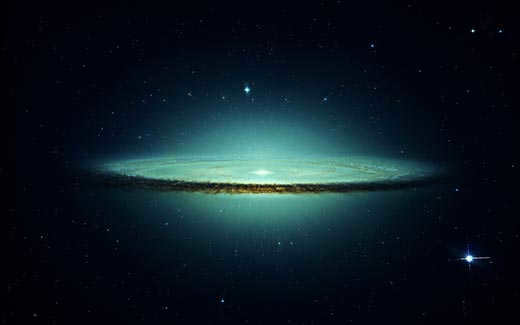
What is the speed of light
Although Bradley’s calculations were accurate, it was not until the 20th century that the exact speed of light was determined. Modern laser technology was used for this purpose, allowing for precise calculation of the refractive index of light rays. As a result, the speed of light was found to be 299,792,458 kilometers per second.
Interestingly, astronomers still rely on these figures today. Furthermore, these calculations have also helped determine the time it takes for light rays to travel around the globe without being affected by gravitational fields.
What is the equivalent of 1 light year in kilometers?
The calculation is based on 365 days. If we convert the daily value to seconds, we get 86400 seconds. The total for those days would be 31,557,600.
We have determined the distance traveled by a beam of light in one second. Multiplying that by 31,557,600 gives us a value slightly over 9.4 trillion. This is the measurement of a light year in kilometers. It represents the distance that a beam of light can travel in a vacuum over the course of 365 days, without being affected by gravitational fields as it orbits the Earth.
Here are some examples of distances calculated using this method:
- A ray of light takes 1 minute and 3 seconds to travel from Earth to the Moon;
- By using this method, we can determine the diameter of our galactic disk in 100,000 years;
- The distance from the Sun to Pluto, measured in light hours, is 5.25 hours;
- A beam of light from Earth will reach the Andromeda Galaxy in 2,500,000 light years, and it will only take 4 years to reach the star Proxima Centauri;
- It takes 8.20 minutes for sunlight to reach our planet;
- The Center of our Galaxy is located 26,000,000 light years away from the Sun;
- The Virgo cluster is approximately 58,000,000 years away from our planet;
- Galaxy clusters have diameters of tens of millions of years.
- The furthest distance ever recorded from Earth to the outermost boundary of the observable universe amounted to a staggering 45 billion light years.
Continued progress in scientific investigations and the precise characterization of the light year


When considering the journey of a hypothetical photon from Earth to the Moon, it is important to ensure that all proportions are accurately represented.
In the year 1728, the esteemed English astronomer James Bradley, known for his discovery of stellar aberration, became the first person to calculate the approximate speed of light. Through his calculations, he determined the value to be 301 thousand kilometers per second. However, it is worth noting that this value was not entirely accurate. Over time, more sophisticated methods of calculating the speed of light have been developed, often excluding the influence of cosmic bodies and focusing solely on measurements taken on Earth.
If astronomers were to measure distances to other stars, nebulae, and galaxies in kilometers, these values would be mind-bogglingly large, with an enormous amount of zeros. When it comes to the planets in our solar system, where distances are measured in millions and billions of kilometers, this system still works, but when it comes to interstellar distances, kilometers become too minuscule. It’s akin to measuring the distance between cities in millimeters.
A light-year is an extremely large unit of measurement. It is used to describe vast distances in space. For instance, the closest star to us is more than 4 light-years away, while some stars are hundreds or even thousands of light-years away. The famous Orion Nebula, for example, is located 1,300 light-years from Earth. The center of our galaxy, the Milky Way, is an astonishing 26,000 light-years away. To put it into perspective, the diameter of our galaxy spans 100,000 light-years. If we were to convert the distance to the Orion Nebula into kilometers, it would be an astronomical figure: 12,651,000,000,000,000,000,000,000,000,000,000,000,000,000 kilometers. Light-years provide a convenient way to measure such immense distances.
However, it’s important to note that these distances are considered normal within the galaxy. When we start considering distances between galaxies, they become even more mind-boggling. The closest galaxy to us, Andromeda, is a staggering 2.5 million light-years away. But that’s just the tip of the iceberg, as there are billions of galaxies out there, each at even greater distances.
However, the concept of a light year provides us with the ability to delve into the past. Therefore, when observing the Andromeda galaxy, which is located 2.5 million light-years away, we are witnessing it as it appeared 2.5 million years ago, rather than its present state. In essence, we have only just received the light emitted by this galaxy 2.5 million years ago. While a star positioned 1,000 light years away may undergo an explosion at this very moment, the light from the event will not reach Earth until 1,000 years in the future. For an entire millennium, we will perceive the star as if it is still in existence.
Nonetheless, our ability to observe ceases beyond a distance of 13.8 billion light years. This figure represents the age of the universe, and any object beyond this point would possess an extremely advanced age.
Comparison of Light Years and Earth Years
In our daily lives, we often find ourselves measuring distances – whether it’s the distance to our workplace, the nearest store, or even to another city. Comparing different quantities helps us understand the differences between them. Many people tend to view light years and Earth years as similar concepts, if not the same. This leads to a desire to compare them. However, it’s important to first define what we mean by an Earth year. One way to define it is as the distance traveled by our planet in 365 days. With these parameters, a comparable period of light would equate to 63,000 Earth years.
If we consider the Earth in terms of days, it becomes a unit of time. On the other hand, light is a measure of distance. Therefore, comparing these values doesn’t make sense. In this case, there is no answer to the question of how light years and Earth years relate to each other.
Martian time
Space stations rely on solar energy as their power source, with the sun’s energy being stored in batteries. In order to test the functionality of these devices, it is crucial to accurately measure the amount of radiation received by the Martian surface at any given time of day. While scientists are aware of the duration of a Martian day, special systems are required to accurately measure time due to the longer duration of a day on Mars compared to Earth.
Humans have a strong desire to explore the universe and adapt its resources for their own benefit. In order to effectively manage the activities of Mars rovers and the specialists responsible for their maintenance, it is essential to have knowledge of the specific time of day on Mars. Unlike Earth, Mars does not have time zones, and the descent vehicles are operated based on local time, which is different from Earth time.
The speed of light, which was calculated, enabled astronomers to measure the distances between planets, stars, and galaxies. It became evident that the light emitted from a star does not reach Earth instantaneously. When we observe celestial objects in the night sky, we are actually witnessing the past. For instance, the explosion of a remote planet hundreds of years ago would only be observed by scientists in the present.
When dealing with calculations in our Universe, it is convenient to use this particular unit of measurement. The usage of hours, weeks, or months is not as frequent. If we were to calculate the distance to faraway celestial objects using these units, the resulting value would be incredibly large. This would make it challenging and impractical to utilize these values in mathematical calculations. Scientists have recognized this issue and have opted to use a different unit of measurement – the parsec – for astronomical calculations involving vast distances. This unit is more suitable for complex mathematical computations. In fact, one parsec is equivalent to three times a light-year.
Definition of the term
The term “light-year” can be found in any astronomy textbook. It refers to the distance that a ray of light travels in the span of one Earth year. While this definition may suffice for an amateur astronomer, it is considered incomplete by experts in cosmology. It’s important to note that a light year is not solely determined by the distance light travels in a year, but rather the distance that a beam of light travels through a vacuum in 365.25 Earth days, without any interference from magnetic fields.
A light year is equivalent to 9.46 trillion kilometers. This is the precise distance that a beam of light traverses in the span of one year. Now, you might be curious as to how astronomers arrived at such an accurate measurement of light’s path. Let’s delve into that topic below.
What is the equivalent of a light year?
If we consider that the speed of light is equal to 299,792,458 meters per second, it is simple to calculate that light travels 17,987,547,480 meters per minute. This information is commonly utilized by astrophysicists to measure distances within planetary systems.
When studying celestial bodies on a cosmic scale, it is much more convenient to use the light-year as a reference. This is equivalent to 9.460 trillion kilometers or 0.306 parsecs. Interestingly, observing cosmic bodies is the only instance in which a person can witness the past with their own eyes.
It takes many years for the light from a distant star to reach Earth. As a result, when observing space objects, you are not seeing them as they currently exist, but rather as they appeared when the light was emitted.
Why is the Martian year twice as long as the Earth year?
The length of the annual period on Mars is significantly longer than the 365 days we are familiar with due to the unique orbital characteristics of the two planets. In the solar system, Mars is the fourth planet from the Sun, while Earth is the third. The average distance from the center of the solar system to Mars is approximately 228 million kilometers, which is about 1.5 times greater than the distance to Earth. This means that the diameter of Earth’s orbit is smaller and it lies within the orbit of its closest neighbor. As a result, Mars has to travel a much greater distance on its journey around the Sun. Additionally, Mars has a lower speed, moving at only 24 thousand kilometers per second compared to Earth’s 29 thousand kilometers per second. This means that Earth completes two revolutions around the Sun in the time it takes Mars to complete one full revolution.
What exactly is Martian ash? When it comes to missions heading to the Red Planet, it is essential to adhere to the international standard of using Martian time.
Martian days are commonly known as sols, which are traditionally divided into 24 hours.
It’s important to note that the discrepancy arises from the fact that Martian seconds are 2.7% longer than Earth seconds.
During the study of the Red Planet, scientists faced difficulties in determining time. The Martian Sun has become a distinctive measure of time.
Examples of Distances in Light-Years that are Widely Recognized

The distance separating the Earth and the Moon
- Astronomical units and parsecs are used to measure the vastness of space. A single light-year is equivalent to 63,241,077 astronomical units or 0.306,601 parsecs;
- In terms of light-years, the distance from our planet to the Moon is approximately 4 – 10-8 or 380,000 kilometers. This means that it takes a mere 1.3 seconds for a beam of light emitted from Earth to reach our lunar neighbor;
- The core of the Milky Way Galaxy is positioned 26,000 light-years away from our Sun..;
- It takes the Sun approximately 5 hours to traverse the vast expanse of space and reach Pluto, which stands as one of the most remote entities within our Solar System;
- Proxima Centauri, the star closest to the Sun after our own, is situated 4.2 light-years away from Earth, while the closest galaxy, Andromeda, is located a staggering 2.5 million light-years away.
What is the purpose of measuring distances in light years?
- Proxima Centauri, the star closest to the Sun, is located 4.2 light-years away from us. This means that it takes light 4.2 years to travel from the Sun to Proxima Centauri.
- Many of the stars we observe in the night sky are located tens or hundreds of light years away from us!
- The star Deneb, found in the summer triangle, is situated 2,500 light-years away from us.
- The center of our galaxy, known as the Milky Way, is located 30,000 light years away from us.
- The Milky Way has a diameter of 100,000 light years.
- The Andromeda Nebula, the nearest large spiral galaxy, is situated 2.5 million light-years away.
- From Earth to the center of a large cluster of galaxies in the Virgo constellation is a distance of 65 million light-years.
- The nearest quasars are separated by a distance of 3 billion light years.
- Ultimately, the distance to the edge of the observable universe is approximately 14 billion light years.
Extent
